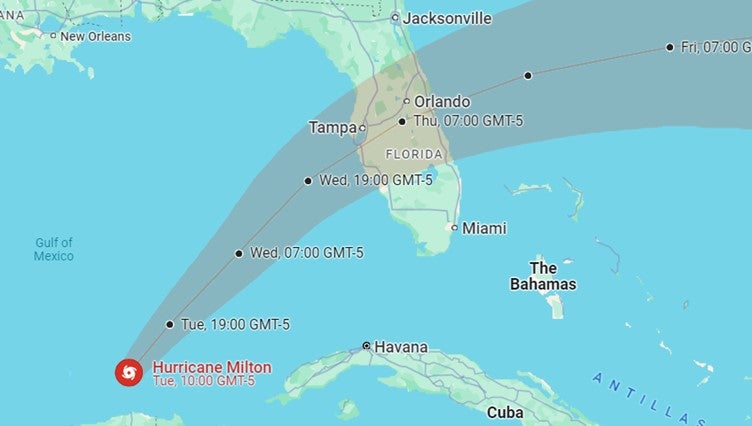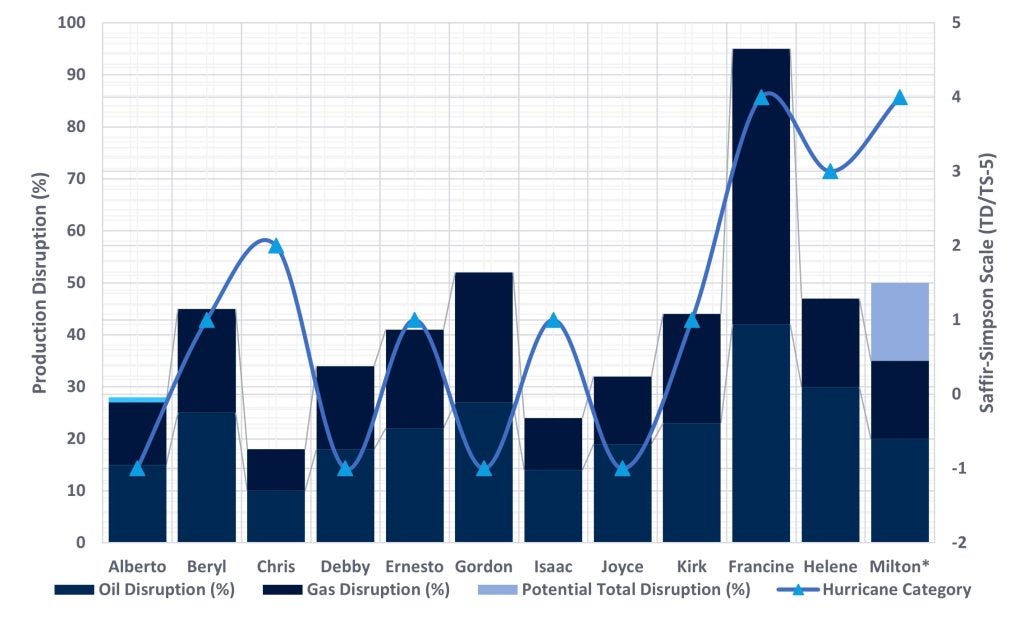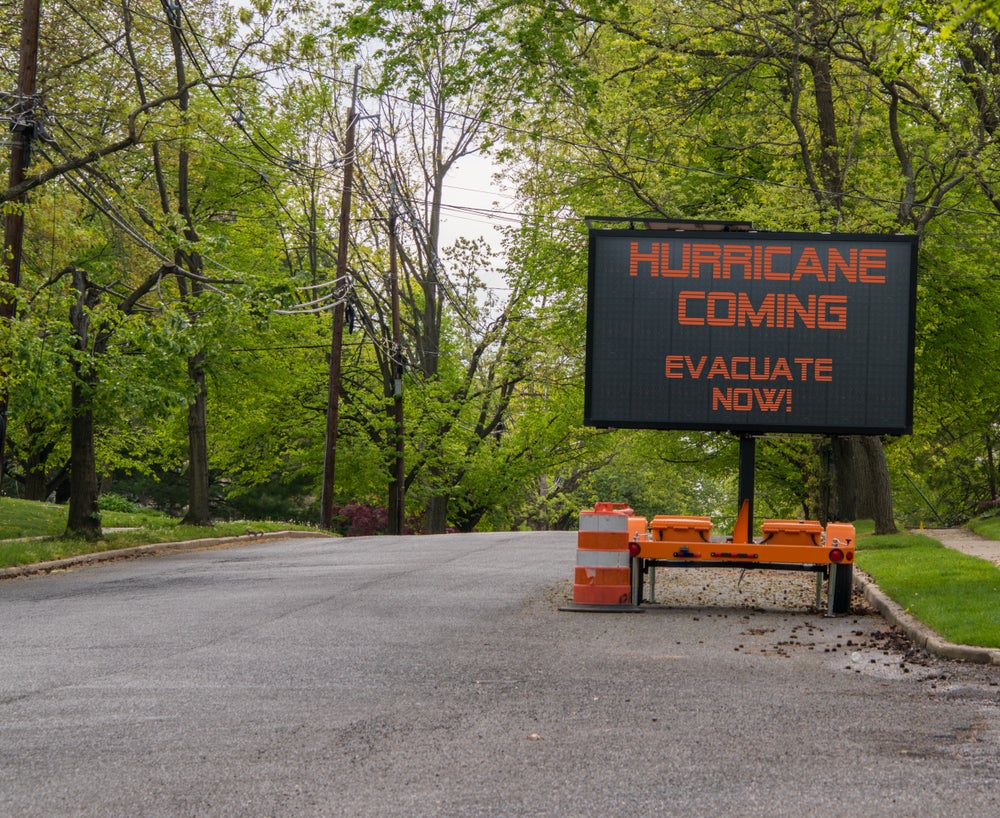With Hurricane Milton making landfall in the early hours of Thursday 10th October (EST), the two most significant hurricanes to make landfall so far, Francine, and Helene have already impacted oil and gas operations in the Gulf of Mexico, and inland United States.
As analysts were gauging the many ways in which these hurricanes will affect oil and gas, three different aspects of this can be considered: tracking storm paths, shut-ins in production, and assessment of recovery timelines.

As of Tuesday evening (8th October), Hurricane Milton has strengthened once again, and agencies across the US, not least including a direct message from the White House itself, have said the hurricane could be the worst to hit Florida. President Biden addressed the issue by stating “evacuations are a matter of life and death”, in a stark warning to the residents of Florida. There are also official reports suggesting it has the potential to be the worst hurricane in a century to hit the US, with state agencies also saying, “some areas”, of the storm surges will be “not survivable”.
Further closures have been made to oil and gas facilities including Kinder Morgan’s Central Florida Pipeline systems, which carry gasoline and diesel between Orlando and Tampa. In addition to this, due to Tampa’s coastal position, Kinder Morgan have closed all bulk-fuel delivery terminals. Refiner Citgo has also followed suit and shut down its Tampa terminal, along with Buckeye, who have suspended Orlando based operations.
As of now there is not much that can be said until landfall takes place, and impact assessments can be made. For now, wind speeds will reach 160 mph at their peak, and storm surges are expected to be around 12-15 feet. With business insider already reporting US natural gas futures have fallen by 8% in recent days, this serves as an indicator of how serious hurricanes have become, not just bringing natural catastrophe and humanitarian disaster, but also increased economic shock felt domestically, and globally.
If Hurricane Milton lives up to the fear of officials, the road to recovery could be a bleak one when thinking about the potential scale of the hurricane’s damage.
Hurricane related closures in 2024
So far, several heavy storms have forcibly shut off production of much oil and gas. Hurricane Francine alone was responsible for the temporary shutting of 42% of offshore oil production, and 53% of natural gas output, as reported by the US Bureau of Safety and Environmental Enforcement (BSEE). Ports such as the Louisiana Offshore Oil Port, and other major refineries nearby were also affected and reduced the overall refining capacity by 20%. Hurricane Helene caused a 30% reduction in oil production, and Milton threatens to create further delays in the road to recovery.
Hurricanes are such, that they cause snowball effects. They hurt production, and this ripples down to supply chains, pushing up prices for both oil and gas. Furthermore, hurricanes create bottlenecks at refinery facilities, adding to repercussions like short-term upticks in fuel prices.
More broadly, in the case of LNG, a line of tankers waiting for loading at the terminals in the Gulf increases shipping costs, with implications for the price of global gas markets, especially in Europe and Asia. Furthermore, in the downstream segment, these bottlenecks increase costs for industries reliant on refined products. With growing tensions due to the conflict in the Middle East already impacting global markets, Hurricanes in the Gulf add more pressure on pricing, driving costs up for consumers.

Disruption measurement
The actual measure of hurricane-related disruptions for oil and gas depends upon real-time positions and data from storm-tracking satellites, reports from the BSEE, and company production reports such as Shell, Chevron, and ExxonMobil. Storm path tracking takes place much before a hurricane makes landfall.
- Shut-In Production: This is the key measure used by the U.S. BSEE for indication of disruption. “Shut-in” refers to evacuation of platforms and cessation of production either as precautionary measure or actual storm damage.
- Forecasting Models: Industry forecasters such as Enverus Intelligence Research, or EIR, perform scenario analyses that estimate the possible potential of disruptions. EIR’s mid-impact for the year 2024 projected a shutdown of Gulf of Mexico production by 40% for up to 7 days.
- Post-Storm Recovery: Another perspective in the analysis emanates from the recovery period. Most platform have been able to return to production within days. For example, following Hurricane Francine, companies quickly re-deployed their staff and restarted operations, thus preventing long-term losses.
Saffir-Simpson Hurricane Wind Scale (SSHWS)
The classification of hurricanes that exceed intensities of tropical depressions and tropical storms, go into five categories. These are based on the intensity of their sustained winds.

Industry analysis
The industry has so far been able to avoid catastrophic disruptions, such as from Hurricane Ida in 2021, and Hurricane Harvey in 2017. In this case, improved forecast models, improved evacuation protocols, and resilient infrastructure have all combined to mitigate the risks associated from hurricanes in the Gulf of Mexico.
However, optimistic as these situations may be, it does not avoid the cumulative disasters from Francine, Helene, and Milton. An interesting point would be to look at the growing exposure of natural gas facilities in the Gulf, especially LNG terminals, as export capacity increases. The Gulf accounts for around 15% of US crude oil production and about 5% of its natural gas. Any disruptions, therefore, have not only national impacts, but also international too. As worldwide demand for natural gas, especially in Europe and Asia, increases, even minor disruptions may lead to price volatilities.
Hurricane Milton’s impact is certainly forecast to cause further disruptions. Beyond the catastrophic and humanitarian crisis, it will bring to Florida, and surrounding areas, the NOAA’s model predicts a further 50% of oil production could be shut down in the lead up to landfall. Enverus has also stated this impact could last as long as a week. Current data suggests the delays in recovery from Hurricane Francine, and Helene, could lead to extended shut-ins, causing an exacerbation of supply chain bottlenecks.
Vulnerabilities
This Atlantic hurricane season marks another record in the series of vulnerabilities within the infrastructure of oil and gas resources in the Gulf of Mexico due to radical changes in weather conditions.
While production shutdowns were widespread, the industry has been focused on how to minimize long-lasting damages and impact. With more frequent and intense hurricanes, the industry will be required to continue investment in resilient infrastructure with an improvement in forecasting methods that will lead to a reduction in disruptions.
If nothing else, the lesson of 2024 so far is that in a world ever more reliant on natural gas exports from the United States, the Atlantic hurricane season can indeed be a critical factor.



